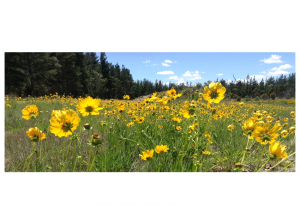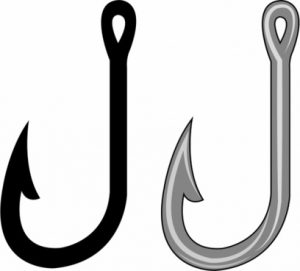
We all think in different ways. Each of us has a unique mind with different ideas, beliefs and opinions ….. and the way we PERCEIVE our own thoughts is fairly unique too. Many of us connect the PERCEPTION of our thoughts with our senses.
Thinking about YOUR thinking ….. how do YOU think?
Pictures, images, visual symbols – Do your thoughts seem to be constructed of things you can see in the external world around you? When you think about a situation, do you have a mental image of what that looks like? Faces? Places? Objects? Do you see a ‘mental’ or internal movie playing scenarios from the past or future?
Voices, sounds, words – Do you hear your thoughts, almost as if there’s another person in your mind, or perhaps your own voice chattering away. Maybe you hear several voices chattering or arguing, a voice from your childhood of yourself or someone else, or maybe unfamiliar voices. These voices speak out the thoughts that go through your mind.
Feelings, sensations, movements of the body – Do you ‘feel’ your thoughts inside your head or your body? When you think about situations or recall events, do you feel the movements or sensations associated with them?
Smell and taste – The sense of smell is often deeply connected with memories. Certain smells can trigger memories, experiences and flashbacks without warning, whether pleasant or unpleasant. The sense of taste can be similar. We use phrases such as “That left a bad taste in my mouth” and “I smell something fishy here”, all of which suggest the use of these senses in the way we perceive our thoughts.
A lot of us will find that our thinking relies on all the senses at different times or in different ways, although one sense may be more dominant than the others. For example, you might notice that your thoughts often present as images – as if you can see them and almost reach out and touch them. But this might be combined with movement and sound, as if you are watching a movie playing out in your mind.
So my question for you is …..
Thinking about YOUR thinking ….. how do YOU think?
Discovering mountain biking as life’s ultimate parallel universe in her middle age,  Kathryn Walton shares information and reflections in Daisy Spoke that connect, inspire and self-empower women to make healthy choices for themselves.
Kathryn Walton shares information and reflections in Daisy Spoke that connect, inspire and self-empower women to make healthy choices for themselves.


 thought, we often don’t even realise that we’ve grabbed hold of it. We can become firmly attached to it and we can have difficulty letting it go. We can find ourselves stuck, squirming and wriggling with the discomfort just as a fish does as it’s reeled in from the water.
thought, we often don’t even realise that we’ve grabbed hold of it. We can become firmly attached to it and we can have difficulty letting it go. We can find ourselves stuck, squirming and wriggling with the discomfort just as a fish does as it’s reeled in from the water. Daily practice of simply noticing your thoughts as they arise during an activity helps to train your brain to notice thoughts arising at other times, and to notice that they are simply thoughts or mental events. If you find the fish hook imagery useful, you can notice the hooks (or thoughts) being cast out, and you can notice which hooks (or thoughts) you cling on to.
Daily practice of simply noticing your thoughts as they arise during an activity helps to train your brain to notice thoughts arising at other times, and to notice that they are simply thoughts or mental events. If you find the fish hook imagery useful, you can notice the hooks (or thoughts) being cast out, and you can notice which hooks (or thoughts) you cling on to.
 further afield to step into our beautiful Australian bush country! As I’ve traversed the trail over the past few months, I’ve sometimes stopped to look at the rock garden and visualise myself riding through the narrow gaps between the rocks without clunking my pedals. I knew that I would need to develop a lot more skill, line accuracy, confidence and power to ride this section. Basically I’d been riding it so slowly that I didn’t have enough power to get over the craggy rocks. Although I enjoyed my brief little fantasies of riding effortlessly over and around the rocks, I certainly didn’t have much hope that I’d ever actually be able to do it.
further afield to step into our beautiful Australian bush country! As I’ve traversed the trail over the past few months, I’ve sometimes stopped to look at the rock garden and visualise myself riding through the narrow gaps between the rocks without clunking my pedals. I knew that I would need to develop a lot more skill, line accuracy, confidence and power to ride this section. Basically I’d been riding it so slowly that I didn’t have enough power to get over the craggy rocks. Although I enjoyed my brief little fantasies of riding effortlessly over and around the rocks, I certainly didn’t have much hope that I’d ever actually be able to do it.  about something that was upsetting me. I wasn’t very mindful of where I was or what I was doing. Suddenly I realised I’d already ridden through the rock garden! I hadn’t dabbed my foot, I didn’t jab my pedals, and the smooth flowy feeling hit the pit of my stomach and came out of my mouth with a loud shriek, my previous upset forgotten in a moment of elation as I realised what I’d done. I’d accidentally got it right!
about something that was upsetting me. I wasn’t very mindful of where I was or what I was doing. Suddenly I realised I’d already ridden through the rock garden! I hadn’t dabbed my foot, I didn’t jab my pedals, and the smooth flowy feeling hit the pit of my stomach and came out of my mouth with a loud shriek, my previous upset forgotten in a moment of elation as I realised what I’d done. I’d accidentally got it right! Today as I walk the same trail and peer along the rock garden, I can clearly see the line that I need to take on my bike. The rocks seem so much smaller than before, the gaps between them seem so much wider, and I realise just how powerful the images and thoughts in our minds can be.
Today as I walk the same trail and peer along the rock garden, I can clearly see the line that I need to take on my bike. The rocks seem so much smaller than before, the gaps between them seem so much wider, and I realise just how powerful the images and thoughts in our minds can be.